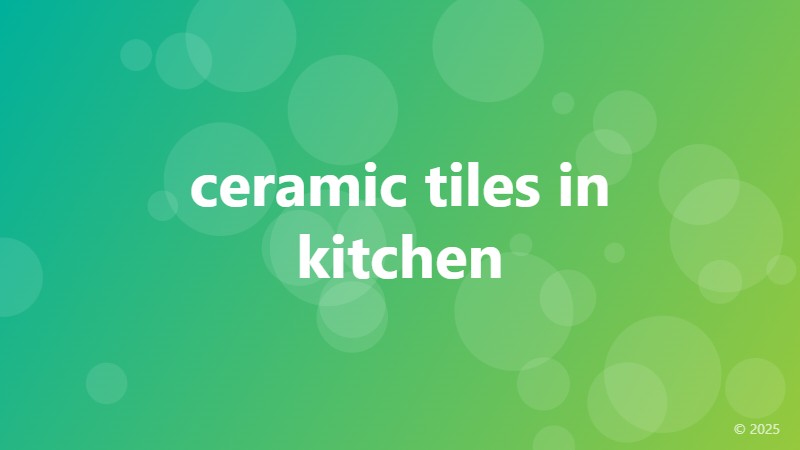ceramic tiles in kitchen

The Benefits of Ceramic Tiles in Kitchen Design
Ceramic tiles have been a popular choice for kitchen flooring and backsplashes for decades, and for good reason. Not only do they offer a wide range of aesthetic benefits, but they're also incredibly durable and easy to maintain. In this article, we'll explore the advantages of incorporating ceramic tiles into your kitchen design and provide some tips for getting the most out of this versatile material.
Durability and Low Maintenance
One of the biggest advantages of ceramic tiles is their durability. Unlike natural stone or wood, ceramic tiles are resistant to scratches, cracks, and fading, making them an ideal choice for high-traffic areas like the kitchen. Additionally, ceramic tiles are easy to clean and maintain, with most requiring only a quick wipe-down with a damp cloth to keep them looking their best.
Aesthetic Versatility
Ceramic tiles come in a staggering array of styles, colors, and patterns, making it easy to find a design that fits your unique aesthetic. From sleek and modern to rustic and traditional, ceramic tiles can be used to create a look that's all your own. Plus, they can be used to create a cohesive look throughout your kitchen by incorporating them into both your flooring and backsplash.
Hygienic and Resistant to Moisture
Kitchens are inherently prone to moisture, which can lead to the growth of mold and mildew. Ceramic tiles, however, are resistant to moisture and easy to clean, making them a hygienic choice for kitchen flooring and backsplashes. This is especially important in areas around sinks, stoves, and refrigerators, where moisture tends to accumulate.
Sustainable and Eco-Friendly
In addition to their many practical benefits, ceramic tiles are also a sustainable and eco-friendly choice. Made from natural materials like clay and water, ceramic tiles are free from harmful chemicals and toxins, making them a great option for homeowners looking to reduce their environmental footprint.
Design Tips and Ideas
When it comes to incorporating ceramic tiles into your kitchen design, the possibilities are endless. Here are a few tips and ideas to get you started:
• Use ceramic tiles to create a focal point in your kitchen, such as a decorative backsplash or accent wall.
• Mix and match different tile styles and patterns to create a unique and eye-catching design.
• Consider using ceramic tiles in unexpected places, such as on a kitchen island or as a decorative trim.
By incorporating ceramic tiles into your kitchen design, you can create a space that's both beautiful and functional. With their durability, aesthetic versatility, and eco-friendly benefits, it's no wonder ceramic tiles remain a popular choice for homeowners and designers alike.